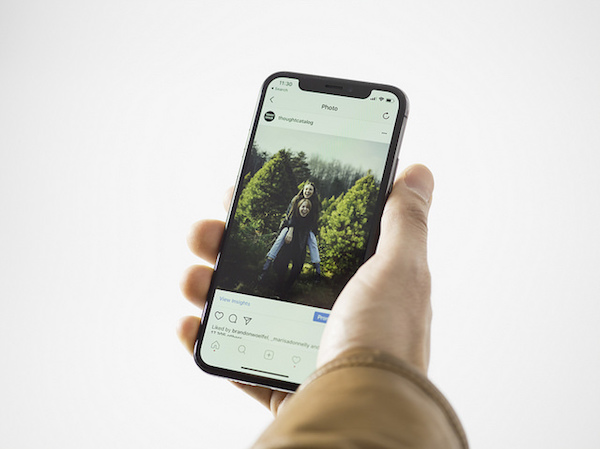“It’s not a secret that influencer marketing is more effective than traditional marketing,” says Sara Koonar, co-founder of Platform Media, a Toronto-based company that specializes in influencer marketing.
She points to studies published daily in advertising publications that show figures to prove this. “For example, 78% of new business in the hospitality industry is driven by social media,” she says.
Disrupting the traditional advertising industry one #sponsored post at a time, influencer marketing has gained major traction in recent years, becoming brands’ go-to when it comes to engaging potential new consumers.

A study by Open Influence conducted in late 2017 surveyed 500 people and found that 60.5% of respondents said that social media was their primary source of information before purchasing a product – a figure that’s likely increased since.
Furthermore, 79% of people surveyed said they trusted product recommendations from people they follow on social media.
When it comes to the allocation of dollars, however – especially with smaller businesses – the belief of some brands and marketers about the impact of influencer marketing is that it’s difficult to measure the ROI on some campaigns in terms of sales.
After all, thousands of “likes” on a photo don’t necessarily translate to thousands of dollars in sales, prompting some marketers to see influencer campaigns as nothing more than awareness tactics. But glossy print ads are actually more difficult to track, as Koonar points out.
“The reason influencer marketing budgets are on the rise is peer-to-peer marketing is more believable and trackable than let’s say, a magazine ad or billboard. It is also a lot more affordable,” said Koonar. “You could purchase an ad in a national leading Canadian magazine, that readers may only glance at or not even open, that maybe only has 10,000 subscribers (these numbers are dwindling daily) and invest thousands of dollars. With an influencer, to reach an audience that is completely trackable, with precise demographics, impressions and visible engagements, you are only paying a few hundred dollars for the same reach.”

In the early days of influencer marketing, there were admittedly some hiccups. Things like fake followers, fake accounts all together, and measuring success simply by “likes” are things of the past.
The industry has adapted and times have changed. Still, brands tend to quantify influencer campaigns on engagements, reach, and impressions rather than actual sales. But – as highlighted in this Forbes piece – if you consider the role of influencers in the sales funnel, the engagement stage is where brand awareness can turn into action.
Things like promo codes and new direct social media sales features like the Instagram stories “swipe up” addition now make it easier to track the sales success of influencer campaigns. When done properly, influencer marketing can be the best tool you have.

So, how brands – big and small – decide which influencer makes the most sense to work with? Koonar says it comes down to believability when casting for their campaigns.
“Trust is very important when it comes to online audiences. They follow their favourite influencer because they feel connected to them, or aspire to be like them,” says Koonar. “So, the products they choose to recommend should not be too far from what they would choose to share in an organic post. A marketing team should choose an influencer based on brand fit over reach. And a good influencer will choose to only work with a brand whose products fit seamlessly into their life. Storytelling is really important. A good ad will always tell a story.”

Whether it’s a post by an Instagrammer or another friend on social media, I have definitely bought something – especially beauty products – because I saw it on an influencer’s feed. So have the girlfriends I spoke to before writing this piece.
When it comes to things like clothing, one friend made the valid point that she would rather see the clothes on an Instagram influencer who they feel they “know,” and in a real-life context than on a rail-thin model in the product of a heavily orchestrated photo shoot. While I don’t have tens and thousands of followers, I know firsthand from my posts wearing event-wear from my friend’s Toronto boutique, Poor Little Rich Girl, has resulted in at least a few dozen visits to the uptown boutique.
One thing is for sure: as long as social media remains a huge part of our daily lives, influencer marketing isn’t going anywhere.
Featured image: Pexels
Articles You Might Be Interested In
Payless Tricked Influencers Into Paying $600 For $20 Shoes
The Growing Importance Of Artists & Lifestyle Influencers In Footwear
The Canadian Fashion Industry Reacts To Karl Lagerfeld’s Passing
The Most Instagrammable Stores In Toronto
Why Some Fashion Brands Choose To Destroy And Burn Unsold Clothes
